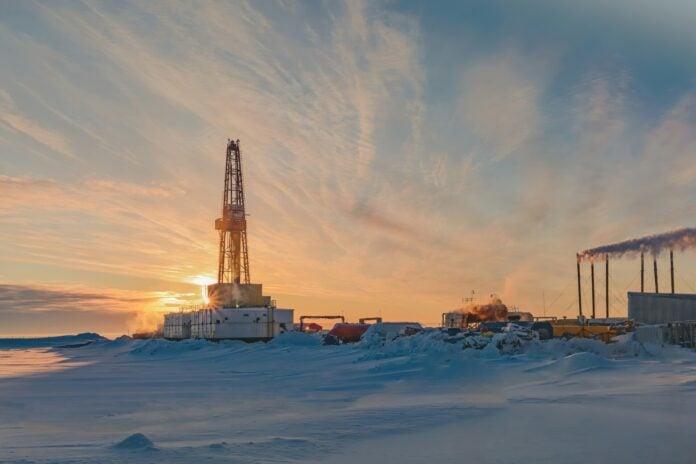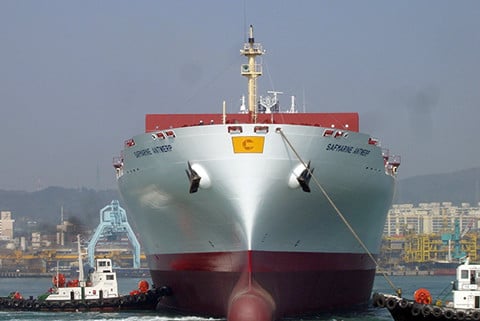During the Cold War, the Arctic was a key battleground between the United States and the Soviet Union, with bombers and nuclear submarines operating under the polar ice.
After the collapse of the Soviet Union, geopolitical interest waned. In recent years, however, the major powers have kept their attention firmly focused on the region. As the ice melts, new opportunities emerge and the Arctic returns to the center of geopolitical developments, emerging as a potentially powerful mining and trade hub, full of opportunities, but also complex challenges, with implications even for security, said Mads Qvist Frederiksen, executive director of the Arctic Economic Council, who will visit Greece in a few days for the Delphi Economic Forum X.
 Frederiksen referred to the ambitions of the US, Russia and China in the region, investment opportunities, while he sent a message to Greek shipowners: “Let’s do something magical.”
Frederiksen referred to the ambitions of the US, Russia and China in the region, investment opportunities, while he sent a message to Greek shipowners: “Let’s do something magical.”
We could not begin the discussion with anything other than the topic of the day: Donald Trump’s insistence on the need for the U.S. to acquire Greenland for strategic and economic reasons.
“For many, many years, very few people truly knew about the Arctic. It was mainly associated with polar bears and glaciers. Later, when climate change became a major issue, more and more people began to turn their attention to it. What we have seen—and it did not start with Donald Trump—is an increasing geopolitical focus on the Arctic in recent years,” he notes.
Russian Superiority and American Ambitions
This geopolitical focus, explains Mr. Frederiksen, is related to the fact that the Arctic is the region where Russia surpasses the rest of the world. Fifty percent of the Arctic belongs to Russia, 75% of the Arctic economy is based in Russia, and the Russians possess far more icebreakers than the U.S.
On his part, Trump focuses on three countries: Canada, Greenland, and Ukraine. “What these three countries have in common is that they all possess critical raw materials, meaning extractive resources. Thus, much of the American president’s interest is related to mining, but also to security—namely, control of the airspace over Greenland,” he states, reminding us that there is a large U.S. military base on the island.
There is also the issue of symbolism: “Greenland is the largest island in the world, so he may simply want to acquire the world’s largest island,” he emphasizes.
Trump Doesn’t Need to Annex Greenland
So, how does he expect the matter to unfold? “The government of Greenland—which has only 56,000 inhabitants—knows that it cannot resist the U.S., but it repeatedly states: ‘We are not for sale, but we are open for business.’ What does this mean? It means that if the U.S. and Donald Trump want to invest more in mining in Greenland, they can do so starting tomorrow. No one is stopping them from investing. The Danish government—through its embassy in Copenhagen—has stated that if the U.S. wants to develop military bases in Greenland, they can do so. So, there is no real need for Donald Trump to annex Greenland in any way. There are other ways to cooperate with the Greenlanders. Additionally, a recent survey showed that the majority of Greenland’s population does not wish to join the U.S.”
Of course, China has also entered the competition with its so-called Polar Silk Road. However, as Mr. Frederiksen explains, its moves so far have not been as aggressive as some expected or feared.
The Arctic Economy and the Key Sectors
Currently, the Arctic economy relies on three main sectors:
- Fisheries, which is the second-largest export sector in Arctic Norway and accounts for 95% of Greenland’s exports. These exports are primarily directed to China, which is the main market.
- Energy (mainly oil and gas, but not exclusively). This sector is crucial for Alaska, Northern Norway, Iceland (where geothermal energy dominates), and Russia, which has vast oil and gas reserves. Here, there are no significant Chinese investments.
- The mining industry, where some Chinese investments have been made, but they are far fewer than many anticipated. “Therefore, China has a strategy and a Polar Silk Road, but it has not invested money to the extent that many feared. Looking at the Arctic as a whole, which consists of eight countries, we see that Chinese investments have been minimal,” he noted.
“The Future Is No Longer What It Used to Be”
How does the Arctic Economic Council manage the conflicting interests of different nations?
“It is a challenge. It is a challenge for all companies because the most dangerous thing for them is uncertainty. If you cannot predict what will happen, that is the most dangerous situation. There is a famous saying: ‘The future is no longer what it used to be.’ This is also true for businesses. How do we handle it? First, we continuously update our members on trends and developments. Things are changing very rapidly. Second, we remain calm. If you are going through a snowstorm, you cannot panic. You must stay calm and focus on the long-term plan.”
Furthermore, he explains, “We see business opportunities in all of this. NATO is investing in defense, and a large portion of these investments is directed toward the Arctic. Also, the European Union is investing in mining, mainly in the northern part of Finland and Sweden. So, we see that more investments are coming in. The question now is how we can secure a share of them.”
Melting Ice Opens Up a Backup Route
Investments are coming, and opportunities are emerging. But how quickly can polar routes become commercially viable? Could they change global trade and reduce dependence on the Suez and Panama Canals? These were the questions we posed to Mr. Frederiksen.
There are three maritime routes, as he explained:
- The Northwest Passage over Canada. Even with climate change, it will not be navigable for a long time.
- The Northeast Passage, along the Russian coast. “Currently, only Russian and Chinese ships sail there. Before the war, there was some Greek interest in the area,” he notes. However, the head of the route stated recently that even in 25 years, it will be difficult to use it on a large scale.
- The Transpolar Route. There is a high likelihood that it will be navigable within the next 20-30 years. However, it will require high expertise and technology. “It is not like sailing in the Mediterranean. However, it could serve as a backup route for Suez and Panama in case of emergencies,” he emphasizes.
But It Requires $1 Trillion in Investments
However, for these routes to be viable, investments are required in satellite monitoring, ports, energy, and search-and-rescue services, as explained by the executive director of the Arctic Economic Council. Investments will also be needed in tourism infrastructure, as the number of tourists in the Arctic is increasing, with many cruise ships traveling north. Investment bank Guggenheim Partners has estimated that over $1 trillion will be needed in investments across the Arctic over the next 15 years.
Nevertheless, in all of the above, Mr. Frederiksen comments that sustainability is key. “The region has only four million people, 10% of whom are indigenous. So, there are not many people, but it is a vast area. We believe that in order to continue operating there, sustainability is essential. In fisheries, if you overfish, you destroy your business. So, it makes no sense to overfish. In energy, if an oil spill occurs or something similar, it also affects our home. Regarding mining, it can be done in a very responsible manner in the Arctic, and we also know that to achieve our climate goals and the ‘green transition,’ we need mining. To build wind turbines or electric vehicles, we need to extract much more copper, nickel, uranium, and other resources. So, to be responsible and sustainable, mining is necessary.”
Naturally, increasing emphasis is also being placed on renewable energy.
A call to Greek shipping
Do Greek companies fit into this future? Absolutely yes is the answer, according to Frederiksen who addressed a call to Greek shipowners.
More specifically, he stated on Greek shipping:
“Greece has always had a relationship with the Arctic for many, many years through shipping companies, which are world leaders in many sectors. There are many more opportunities and we look forward to working more with the Greeks on this. Shipping is in the history of Greece and in the history of the Arctic. So we can combine the experience from the south and the experience from the north and then something magical will happen. I am confident about that.”














